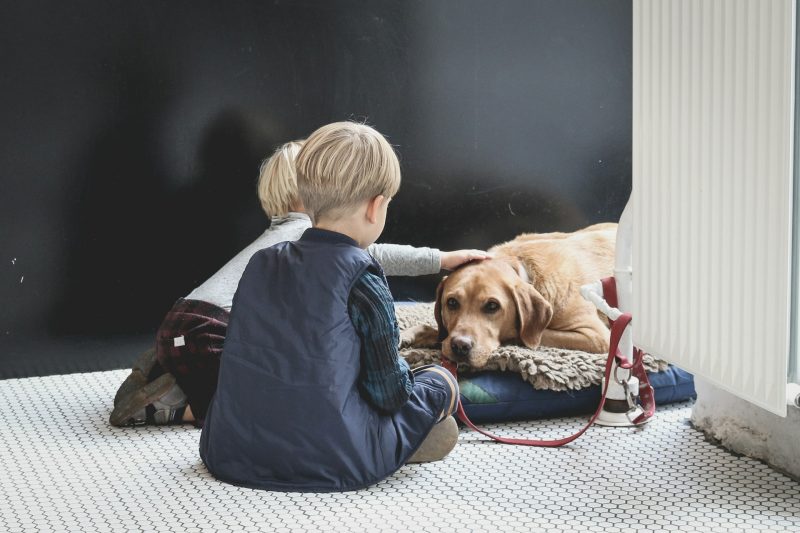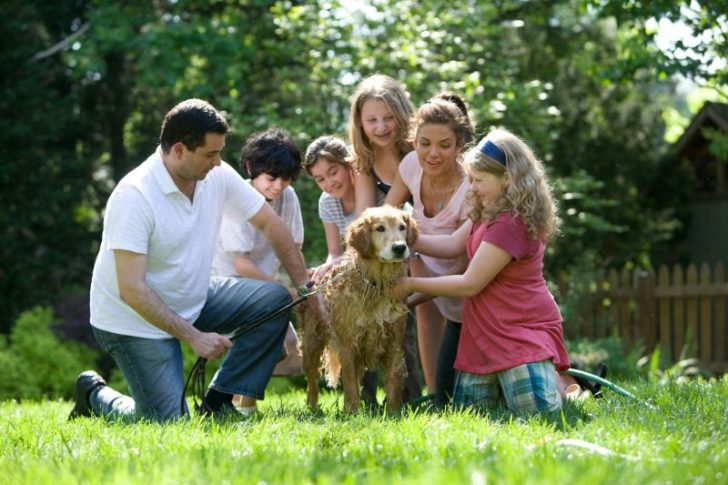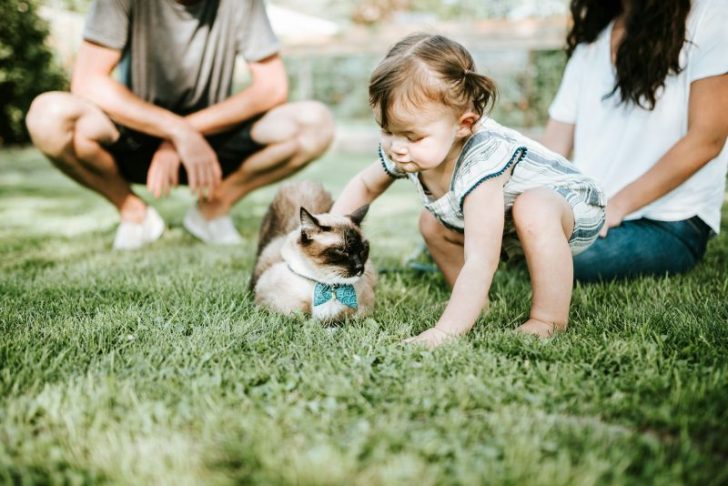
How Losing a Family Pet Can Teach Your Kids About Death & Grief

No one wants to see their kid cry over a pet, but it happens. Pets don’t live forever, and when they go, it hurts. But the truth is that losing a pet is often a child’s first real brush with death. As painful as it is, it is also a rare chance for parents to step in and teach something meaningful.
Death is a hard subject. Most people avoid it. But kids are smarter and more curious than we give them credit for. When a pet dies, it opens the door to talk about things we usually hide. And it is better for kids to learn about death in a gentle way, through a pet, than through a more sudden or scary loss.
Parents Should Use Simple & Direct Words
Young children don’t fully understand the concept of “forever.” When a goldfish dies or a cat doesn’t come home, that is when the questions start. What happened? Where did they go? Will they come back? This is your moment. Answer simply and clearly.

CDC / Unsplash / As a parent, be honest to your kids. Say the pet died, and explain what that means. Kids don’t need deep philosophy. They just need the truth in words they can grasp.
When you give them real answers, you build trust. You also take away some of the fear that death always brings.
Let Them See You Grieve Too
It is okay to let your child see your sadness. Don’t fake smiles or say “It’s okay” if it isn’t. When kids see you cry, they learn that grief is normal. It tells them it is okay to feel heartbroken and that they are not weak or wrong for feeling lost. This helps them build emotional strength.
At the same time, don’t let sadness take over the whole house. Keep routines going. Eat dinner. Go to school. Laugh when something is funny. Let grief be part of life, not all of it.
Make Space to Say Goodbye
Rituals help. Holding a small memorial, planting a flower, or drawing a picture of the pet gives your child a way to say goodbye. It turns abstract feelings into something they can see and do. It also shows them that honoring someone who died is part of healing.
Loss isn’t something to fix. It is something to feel. Let your kids know that.
Don’t Avoid the Big Questions
Don’t dodge questions about what happens after death. You don’t need all the answers. It is okay to say, “I don’t know.” Share what you believe, if you have beliefs, and be open to your child forming their own thoughts. This sparks bigger conversations about life, meaning, and what really matters.

Chewy / Unsplash / Losing a pet doesn’t just hurt. It shapes how a child sees the world. It teaches that love is real, but so is loss.
Watch how your child reacts in the weeks after. Some kids cry a lot, others go quiet. Some act out. All of it is normal. But if they stop eating, can’t sleep, or seem stuck in sadness, check in deeper.
Let It Build Connection, Not Distance
Most importantly, use this moment to grow closer. Sit with your child, tell stories about the pet, and let them lead the way. These talks don’t need to be long or serious all the time. Sometimes a casual chat during a walk or over cereal is enough to keep the connection strong.
That sadness fades, but memories stay. That saying goodbye is hard, but not impossible. These are lessons they will carry for life.
Remember, you don’t need to be a grief expert to guide your child. You just need to show up, tell the truth, and hold space for the hard stuff. Death is a part of life. And as strange as it sounds, the death of a pet can teach your child how to live with more heart.
More in Family
-
`
Inside Gwen Stefani’s Life With Her “Greatest Love” Blake Shelton
Gwen Stefani kicked off Blake Shelton’s 49th birthday in the most personal way possible. On June 18, 2025, she shared a...
July 11, 2025 -
`
What Is the Science Behind Out-of-Body Experiences (OBEs)?
Out-of-body experiences, or OBEs, sound like science fiction. But they are real, at least to those who experience them. OBEs involve...
July 5, 2025 -
`
Why Will Smith Regrets Rejecting a Starring Role in “Inception”
Will Smith once passed on a role that would go on to define sci-fi cinema. In a rare moment of honesty,...
June 29, 2025 -
`
5 Things Millionaires Are Doing With Their Money in 2025
Money doesn’t sit still when you are rich. Millionaires don’t hoard it, they grow it. Every dollar has a job to...
June 21, 2025 -
`
‘Living Room Kid’ vs. ‘Bedroom Kid’: The Difference & Parenting Tips
Parenting means learning the little clues that show how your child feels. One major clue? Where your kid spends most of...
June 13, 2025 -
`
5 Ways Morning Meditation Can Boost Your Mental Health
Morning meditation is backed by science and proven to make your brain and body feel better. Right after you wake up,...
June 8, 2025 -
`
Top 10 Best-Dressed Celebs at the 2025 Cannes Film Festival
The 2025 Cannes Film Festival is turning up the glam, but not without surprises. Just a day before the premieres began,...
May 30, 2025 -
`
Warren Buffett Shares Key Investment Lessons at the 2025 Berkshire Shareholder Meeting
Warren Buffett walked into the 2025 Berkshire Hathaway Shareholder Meeting with the same calm he has carried through decades of market...
May 23, 2025 -
`
Are Trump’s Pronatalist Policies Good for Kids?
Kids are at the center of every debate about America’s future, and now they are at the heart of Trump’s newest...
May 15, 2025















You must be logged in to post a comment Login